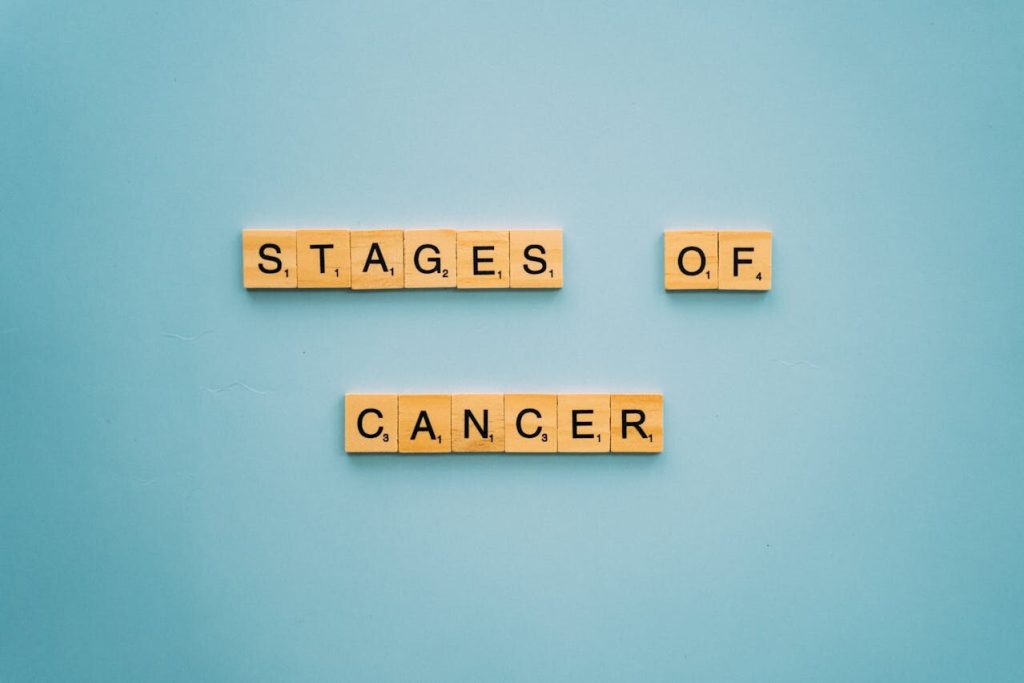Accurate diagnosis is crucial in treating cancer and improving patient outcomes. While there are various methods of detecting cancer, ultrasound is a non-invasive imaging technique that has shown promise in cancer diagnosis. In this article, we will explore the diagnostic capabilities of ultrasound in detecting cancer, particularly in the detection of ovarian and breast cancer, as well as its potential in guiding biopsies and detecting lung nodules. We will also introduce the Cancer Center for Healing in Irvine, CA, which offers a comprehensive approach to cancer care under the guidance of Dr. Leigh Erin Connealy.
Key Takeaways:
- Ultrasound is a non-invasive imaging technique that holds potential in detecting cancer.
- Ultrasound can aid in the detection of ovarian and breast cancer, as well as guide biopsies and detect lung nodules.
- The Cancer Center for Healing in Irvine, CA offers a comprehensive approach to cancer care under the guidance of Dr. Leigh Erin Connealy.
Understanding Ultrasound Imaging for Cancer Detection
Ultrasound imaging is a non-invasive diagnostic tool that uses high-frequency sound waves to create images of internal structures within the body. These images can be used to detect the presence of cancerous cells and tumors in various parts of the body.
During an ultrasound exam, a small handheld device called a transducer is placed on the skin over the area being examined. The transducer emits sound waves that bounce off the internal structures and tissues, creating images that can be viewed in real-time on a screen.
Ultrasound imaging can be used to detect a range of cancers, including those in the breast, liver, pancreas, and ovaries. It is often used in combination with other diagnostic tests, such as mammography or CT scans, to provide a more comprehensive evaluation.
Types of Ultrasound Tests Used for Cancer Detection
There are several types of ultrasound tests that can be used for cancer detection:
| Type of Ultrasound Test | Description |
|---|---|
| Abdominal Ultrasound | Used to detect tumors in the liver, pancreas, and kidneys. |
| Breast Ultrasound | Used to identify lumps or abnormalities in breast tissue. |
| Pelvic Ultrasound | Used to detect tumors in the ovaries, uterus, and bladder. |
| Transvaginal Ultrasound | Used to detect tumors or abnormalities in the reproductive organs. |
Ultrasound imaging is a safe and painless diagnostic tool that does not use ionizing radiation. It is often the preferred imaging modality for pregnant women and children.
According to the American Cancer Society, ultrasound is highly accurate in detecting breast cancer in women with dense breast tissue, which can be difficult to evaluate with mammography alone.
Ultrasound imaging can also be used to guide biopsies and other interventional procedures, allowing doctors to obtain tissue samples for accurate diagnosis of cancerous cells.
In the next section, we will explore the accuracy of ultrasound in detecting cancer and how it is used in cancer diagnosis.
Ultrasound Accuracy in Cancer Diagnosis
Ultrasound is an effective tool in detecting cancer and guiding treatment decisions. The accuracy of ultrasound in identifying tumors depends on various factors, including the type and location of the cancer, the size of the tumor, and the expertise of the healthcare provider performing the ultrasound.
Research has shown that ultrasound is highly accurate in detecting ovarian cancer, with a sensitivity of up to 92% and a specificity of up to 99%. The use of ultrasound in breast cancer detection is also promising, particularly in women with dense breast tissue. Ultrasound can detect tumors that may be missed by mammography alone.
Ultrasound can be used to guide biopsies and obtain tissue samples for accurate diagnosis. This approach is highly effective in diagnosing cancers of the liver, kidney, and thyroid, as well as breast and prostate cancer.
While ultrasound is not the sole diagnostic tool for cancer detection, it is a valuable and non-invasive method that can aid in early detection and treatment. For comprehensive cancer care, it is important to consult with a healthcare provider who has experience in ultrasound imaging and cancer diagnosis.
Ultrasound Detection of Ovarian Cancer
Early detection is critical for the successful treatment of ovarian cancer. Unfortunately, this disease often goes undetected until it has reached advanced stages. Ultrasound imaging is a valuable tool for the early detection of ovarian cancer and can aid in improving patient outcomes.
Ultrasound tests are non-invasive and can provide detailed images of the ovaries. In women with suspected ovarian cancer, an ultrasound scan can help identify tumors, distinguish between benign and malignant masses, and guide further diagnostic tests.
Ultrasound imaging has shown to be particularly effective in detecting early-stage ovarian cancer in women at high risk, such as those with a family history of the disease. It can also help monitor the response to treatment and detect any recurrence of cancer.
Challenges in Ovarian Cancer Diagnosis
Diagnosing ovarian cancer can be challenging as symptoms are often vague and can be mistaken for other less serious conditions. Additionally, many women do not have any symptoms in the early stages of the disease.
Ovarian cancer is often called the “silent killer” because it can go unnoticed until it has spread to other organs. By then, treatment options may be limited, and the prognosis for the patient is poor. Early detection is key to improving survival rates.
Ultrasound imaging can help mitigate these challenges and aid in the early detection of ovarian cancer. It is a safe, painless, and non-invasive method of imaging the ovaries and detecting any abnormalities.
Ultrasound for Breast Cancer Detection
Ultrasound scans have become an essential tool in detecting breast cancer, especially for women with dense breast tissue. When mammography does not provide clear enough images, ultrasound scans can detect abnormalities or lumps that may be missed by other diagnostic tests.
Although mammography remains the gold standard for breast cancer screening, it has limitations. Mammography can miss up to 20% of breast cancers in women with dense breast tissue. In some cases, mammograms also require additional tests to confirm the presence of cancer.
Ultrasound scans are particularly useful in identifying small tumors and assessing breast lumps. They can also help determine if a lump is solid or fluid-filled, which makes a significant difference in the diagnosis and treatment of breast cancer. Ultrasound scans are also less expensive and non-invasive, making them ideal for routine breast cancer screening.
Physicians often use a combination of mammography and ultrasound scans to detect breast cancer. Mammography can identify structural changes in the breast tissue, while ultrasound scans help assess abnormalities or lumps. A combination of these tests provides a more comprehensive and accurate diagnosis.
Ultrasound-Guided Biopsy for Cancer Diagnosis
Ultrasound-guided biopsy is a minimally invasive procedure that uses ultrasound imaging to accurately guide the placement of a biopsy needle into a suspicious area of tissue for sample collection. This technique is commonly used to diagnose cancer and help determine the best course of treatment.
During an ultrasound-guided biopsy, the patient lies on their back or side while the healthcare provider applies a gel to the skin over the area of interest. The ultrasound probe is then placed on the skin, generating detailed images of the tissue and guiding the needle to the precise location for tissue collection.
This procedure can be performed on various areas of the body, such as the breast, liver, thyroid, and prostate. Ultrasound-guided biopsy is often used to obtain a sample from a suspicious breast mass or an abnormality detected on a liver ultrasound. It is also used to diagnose thyroid nodules, which are growths in the thyroid gland, and to identify prostate cancer.
Compared to other biopsy methods, such as open biopsies or needle localization biopsies, ultrasound-guided biopsy is less invasive and has a shorter recovery time. It is also more accurate in identifying the specific location of the tumor or abnormality, reducing the need for repeat biopsies.
If you are in need of cancer diagnosis or treatment, consider visiting the Cancer Center for Healing in Irvine, CA. Under the guidance of Dr. Leigh Erin Connealy, the center offers both conventional and alternative therapies for a comprehensive approach to cancer care. Contact the center at (949) 680-1880 to schedule a consultation.
Ultrasound Imaging for Lung Cancer Detection
Ultrasound imaging is a promising technology for the detection and monitoring of lung cancer. While traditional chest x-rays and CT scans are commonly used for lung cancer screening and diagnosis, ultrasound has been shown to be a useful tool in identifying lung nodules and guiding further diagnostic tests.
Ultrasound imaging uses high-frequency sound waves to produce images of the inside of the body. The images are created by bouncing sound waves off internal organs and tissues, which are then interpreted by a computer to create real-time imaging.
When it comes to detecting lung cancer, ultrasound imaging has several advantages. It is non-invasive, meaning that it does not require any incisions or the use of radiation. This makes it a safer option for patients, particularly those who are at higher risk for developing lung cancer due to smoking or other factors.
Ultrasound imaging can also be used to guide biopsies of lung nodules, which can help to confirm a cancer diagnosis. During an ultrasound-guided biopsy, a small needle is inserted through the skin and into the nodule, guided by real-time ultrasound imaging. This allows for a targeted and precise approach to obtaining tissue samples for testing.
While ultrasound imaging is not yet widely used as a primary screening tool for lung cancer, researchers are continuing to study its potential in this area. With its non-invasive nature and precise imaging capabilities, ultrasound may become an important tool in the early detection and treatment of lung cancer.
Comprehensive Cancer Care at the Cancer Center for Healing
The Cancer Center for Healing, located in Irvine, CA, is a state-of-the-art facility that offers a comprehensive approach to cancer care. Under the guidance of Dr. Leigh Erin Connealy, the center provides patients with a range of conventional and alternative therapies that are tailored to their individual needs.
At the Cancer Center for Healing, the focus is on treating the whole person, not just the cancer. The team of experts at the center is committed to providing personalized treatment plans that address not only the physical symptoms of the disease but also the emotional and spiritual well-being of their patients.
One of the unique aspects of the Cancer Center for Healing is its integration of holistic treatment modalities. In addition to conventional therapies such as chemotherapy and radiation, patients have access to a variety of alternative treatments, including acupuncture, nutritional therapy, and energy healing.
Dr. Leigh Erin Connealy, MD
Dr. Leigh Erin Connealy, MD is the Medical Director of the Cancer Center for Healing. A renowned expert in integrative medicine, Dr. Connealy has been treating patients with cancer for over 30 years.
Dr. Connealy understands the importance of a comprehensive approach to cancer care. She is committed to providing her patients with the best possible care, using both conventional and alternative therapies to create personalized treatment plans that address all aspects of their health.
| Contact Information | |
|---|---|
| Address: | 6 Hughes, Suite 150 |
| Irvine, CA 92618 | |
| Phone: | (949) 680-1880 |
| Email: | info@cancercenterforhealing.com |
If you or a loved one is facing a cancer diagnosis, the Cancer Center for Healing is here to help. Contact them today to schedule a consultation and learn more about their comprehensive approach to cancer care.
A Comprehensive Approach to Cancer Care
The Cancer Center for Healing in Irvine, CA provides a comprehensive approach to cancer care that integrates conventional and alternative therapies. Under the guidance of Dr. Leigh Erin Connealy, a team of experts work together to develop personalized treatment plans for each patient.
Conventional therapies, such as surgery, radiation, and chemotherapy, are used in conjunction with natural and alternative therapies to address cancer from all angles. This approach not only targets the cancer itself, but also focuses on improving overall health and wellness, which can aid in the body’s ability to fight the disease.
The Cancer Center for Healing also places great emphasis on patient education, empowering individuals to take an active role in their own care. Patients are provided with resources and tools to help them make informed decisions about their treatment journey.
The center’s holistic approach encompasses not only physical health, but also mental and emotional well-being. Patients have access to a range of supportive services, including counseling, meditation and mindfulness classes, and nutritional guidance.
The Cancer Center for Healing aims to provide comprehensive and compassionate care to all patients, while also promoting a healthier and more vibrant lifestyle.
Schedule a Consultation at the Cancer Center for Healing
If you or someone you love is concerned about cancer detection or is looking for a comprehensive approach to cancer care, consider scheduling a consultation at the Cancer Center for Healing. Led by Dr. Leigh Erin Connealy, the center offers a holistic approach to cancer care that integrates conventional and alternative therapies to provide personalized treatment plans for each patient.
| Address: | 6 Hughes, Suite 175, Irvine, CA 92618 |
|---|---|
| Phone: | (949) 680-1880 |
| Email: | info@cancercenterforhealing.com |
The Cancer Center for Healing believes in treating the whole person, not just the disease. Their team of experienced professionals is committed to providing comprehensive care that includes traditional medical treatments, such as surgery, chemotherapy, and radiation therapy, along with a wide range of alternative therapies.
Their goal is to optimize the patient’s overall health, reduce side effects from conventional treatments, and help prevent cancer recurrence.
To schedule a consultation, simply call the center at (949) 680-1880 or email them at info@cancercenterforhealing.com. They will be happy to answer any questions you may have and help you take the first step towards a comprehensive approach to cancer care.
Conclusion
In conclusion, ultrasound imaging is a valuable tool in the detection and diagnosis of cancer. Its non-invasive nature and accuracy in identifying tumors make it an important component of cancer care. The use of ultrasound in detecting ovarian and breast cancer has shown promising results, while the technique has also proven effective in identifying lung nodules. Ultrasound-guided biopsies have also revolutionized cancer diagnosis, allowing doctors to obtain tissue samples without the need for invasive procedures.
At the Cancer Center for Healing in Irvine, CA, patients can expect to receive a comprehensive approach to cancer care. Dr. Leigh Erin Connealy and her team integrate conventional and alternative therapies to provide personalized treatment plans for each patient. By addressing the whole person, not just the disease, the Cancer Center for Healing offers a unique approach to cancer care that focuses on healing and improving overall well-being.
If you or a loved one is seeking comprehensive cancer care, we encourage you to schedule a consultation at the Cancer Center for Healing. You can contact them at (949) 680-1880 to book an appointment and to learn more about their holistic treatment modalities.
FAQ
Q: Can an Ultrasound Detect Cancer?
A: Yes, ultrasound has the potential to detect cancer. Ultrasound imaging is a non-invasive technique that uses sound waves to create images of the body’s internal structures. While it may not be the primary method for diagnosing all types of cancer, it can be used as a valuable tool in detecting tumors and guiding treatment decisions.
Q: How does ultrasound imaging work for cancer detection?
A: Ultrasound imaging uses high-frequency sound waves to create detailed images of the body’s tissues and organs. For cancer detection, ultrasound can help visualize tumors, identify abnormal growths, and assist in determining their characteristics. It is a safe and painless procedure that does not involve exposure to ionizing radiation.
Q: Is ultrasound accurate in detecting cancer?
A: Ultrasound can have varying levels of accuracy in detecting cancer depending on the specific type and location of the tumor. It is generally effective in identifying solid masses and distinguishing them from fluid-filled cysts. However, additional diagnostic tests may be needed to confirm the presence of cancer and provide a definitive diagnosis.
Q: Can an ultrasound detect ovarian cancer?
A: Yes, ultrasound is often used as a diagnostic tool for detecting ovarian cancer. It can help visualize the ovaries and identify any abnormalities, such as tumors or cysts. However, it is important to note that ultrasound findings alone are not sufficient for a conclusive diagnosis. Further tests, such as biopsies or blood tests, may be required.
Q: How is ultrasound used for breast cancer detection?
A: Ultrasound can be used as a complementary imaging modality for breast cancer detection, especially in women with dense breast tissue. It can help identify suspicious areas, guide biopsies, and monitor the response to treatment. However, mammography remains the primary screening tool for breast cancer in most cases.
Q: What is an ultrasound-guided biopsy for cancer diagnosis?
A: An ultrasound-guided biopsy is a procedure in which a small tissue sample is obtained from a suspected tumor or abnormality using ultrasound imaging to guide the needle placement. It is commonly used to diagnose cancers in various organs, including the breast, liver, thyroid, and prostate. The samples obtained through this method are then analyzed by a pathologist to determine if cancer is present.
Q: Can ultrasound imaging detect lung cancer?
A: While ultrasound imaging is not commonly used as a primary screening tool for lung cancer, it can be helpful in certain situations. It has the potential to detect lung nodules and guide further diagnostic tests, such as biopsies or CT scans. However, other imaging modalities, like CT or PET scans, are typically more effective in detecting lung cancer.
Q: What is the Cancer Center for Healing’s approach to comprehensive cancer care?
A: The Cancer Center for Healing, located in Irvine, CA, takes a holistic approach to cancer care. Under the guidance of Dr. Leigh Erin Connealy, they integrate conventional and alternative therapies to provide personalized treatment plans for each patient. They focus on addressing the underlying causes of cancer and supporting the body’s natural healing processes.
Q: How can I schedule a consultation at the Cancer Center for Healing?
A: If you would like to schedule a consultation at the Cancer Center for Healing, please contact them at (949) 680-1880. Their friendly staff will assist you in booking an appointment and answer any questions you may have.






